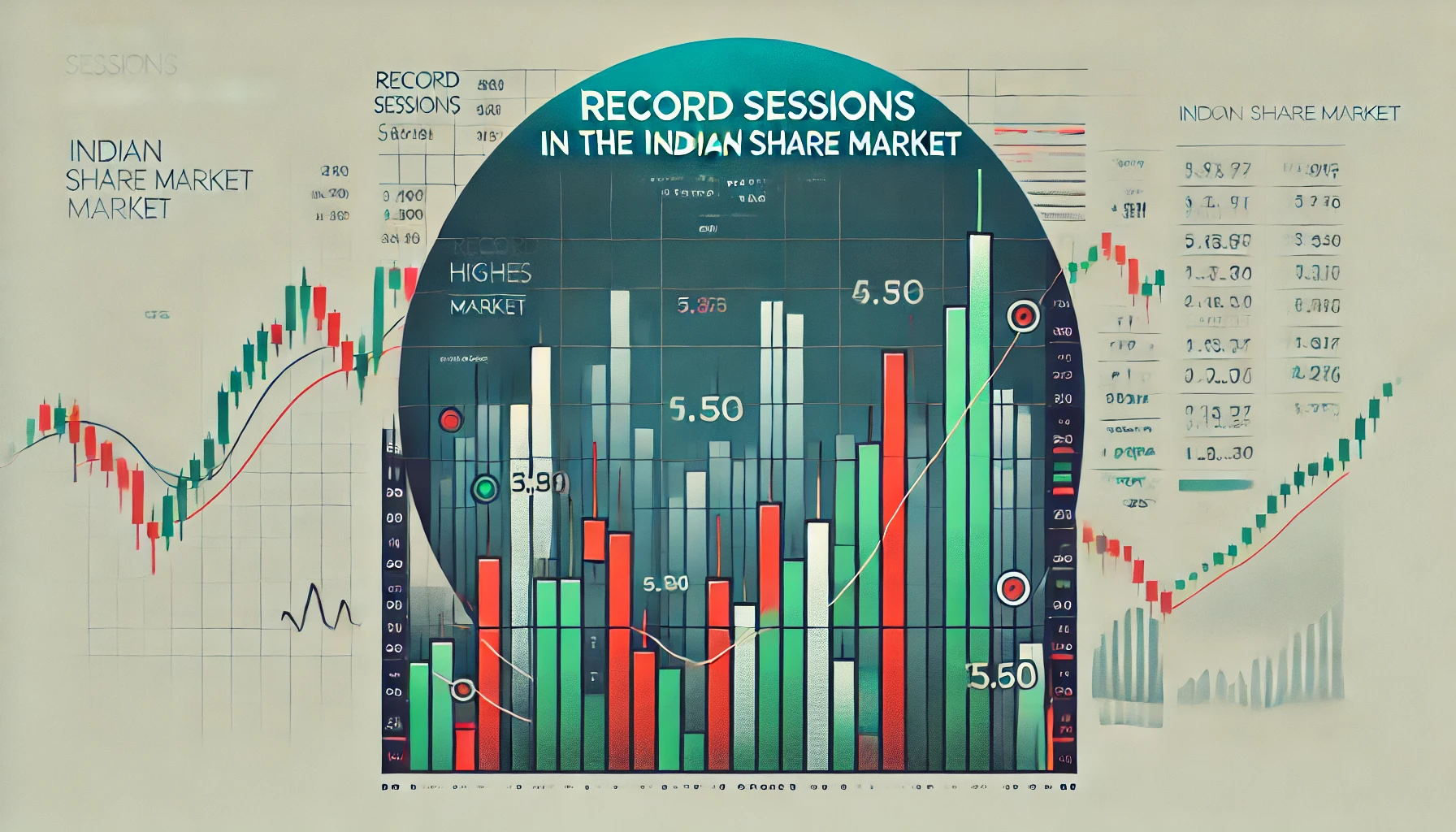In the world of stock trading, identifying trends is a critical skill for traders looking to profit from price movements. The Average Directional Index (ADX) is a powerful tool that helps traders assess the strength of a trend, providing insights into whether the market is in a strong bullish or bearish phase. In the Indian share market, ADX has become a popular indicator for traders who want to make informed decisions about entry and exit points.
This comprehensive guide will explore the basics of ADX, how it works, and how traders in the Indian share market can use it to enhance their trading strategies. Additionally, we’ll dive into historical data and provide practical examples to illustrate the effectiveness of ADX in different market conditions.
What is ADX?
The Average Directional Index (ADX), developed by J. Welles Wilder, is a technical indicator that measures the strength of a trend. Unlike other indicators that focus on the direction of the trend, ADX specifically quantifies its intensity. This makes it a valuable tool for traders who want to determine whether they should follow the current trend or wait for more favorable conditions.
ADX values range from 0 to 100:
- 0-25 indicates a weak or absent trend.
- 25-50 signals a moderate to strong trend.
- 50-75 represents a very strong trend.
- 75-100 indicates an extremely strong trend.
The ADX indicator is typically used alongside two other indicators: the Positive Directional Indicator (+DI) and the Negative Directional Indicator (-DI). Together, these indicators help traders assess the overall market condition.
How to Calculate ADX
To calculate ADX, traders first need to determine the +DI and -DI values, which measure the strength of upward and downward price movements, respectively. Here’s a simplified breakdown of how ADX is calculated:
- Calculate +DM and -DM (Directional Movement):
- +DM = Current High – Previous High (if positive).
- -DM = Previous Low – Current Low (if positive).
- Calculate the True Range (TR):
- TR is the greatest of the following three:
- Current High – Current Low.
- Absolute value of Current High – Previous Close.
- Absolute value of Current Low – Previous Close.
- TR is the greatest of the following three:
- Calculate +DI and -DI:
- +DI = 100 × (14-period +DM / 14-period TR).
- -DI = 100 × (14-period -DM / 14-period TR).
- Calculate ADX:
- ADX is the smoothed average of the absolute value of the difference between +DI and -DI.
Historical Example of ADX in Indian Stocks
Let’s look at how ADX can be applied to Reliance Industries, one of the most traded stocks in the Indian market. Below is a table showcasing the ADX values and the corresponding trend strength:
| Date | ADX Value | Trend Strength | Signal |
|---|---|---|---|
| 1st June 2023 | 20 | Weak Trend | Wait for trend |
| 15th June 2023 | 35 | Strong Trend | Enter trade |
| 30th June 2023 | 55 | Very Strong Trend | Hold position |
In this example, the ADX value for Reliance Industries gradually increased, signaling a strengthening trend. Traders who entered the trade when ADX crossed 25 were able to benefit from the price movement as the trend gained strength.
Using ADX in the Indian Share Market
ADX can be used in various ways depending on market conditions and the trader’s strategy. Here are some common applications:
- Trend Confirmation: ADX helps confirm whether the market is in a trending phase or if the price is consolidating. For example, if ADX rises above 25, it signals the presence of a strong trend, which may be worth following.
- Entry and Exit Signals: When ADX rises above 25 and +DI crosses above -DI, it signals a potential buying opportunity. Conversely, when ADX falls below 25 and -DI crosses above +DI, it may signal a selling opportunity.
- Avoiding False Breakouts: In markets where the price frequently fluctuates without establishing a strong trend, ADX can help traders avoid false breakouts by highlighting weak trends (ADX below 25).
Here’s a table illustrating ADX signals for Tata Consultancy Services (TCS):
| Date | +DI | -DI | ADX | Signal |
|---|---|---|---|---|
| 10th July 2023 | 30 | 18 | 28 | Buy (Strong trend) |
| 25th July 2023 | 22 | 25 | 18 | No trend, wait |
| 1st August 2023 | 35 | 15 | 40 | Hold (Very strong) |
Combining ADX with Other Indicators
While ADX is excellent for measuring trend strength, combining it with other indicators can enhance its effectiveness. Here are two strategies that incorporate ADX:
- ADX + Moving Average: Combining ADX with a 50-day moving average can help traders filter out noise. If the ADX is above 25 and the price is above the moving average, it signals a strong uptrend.
- ADX + RSI (Relative Strength Index): ADX works well with RSI to confirm trend strength and spot potential reversals. For example, if the ADX is above 25 and the RSI is in the overbought zone, it could signal a potential reversal.
Here’s a table showing how ADX and RSI work together for HDFC Bank:
| Date | ADX | RSI | Signal |
|---|---|---|---|
| 5th May 2023 | 35 | 75 | Overbought, sell |
| 20th May 2023 | 22 | 45 | No trade, wait |
| 10th June 2023 | 40 | 60 | Buy, strong trend |
Benefits of Using ADX
- Accurate Trend Strength Measurement: ADX is one of the most reliable indicators for gauging the strength of a trend, helping traders stay in profitable trades longer.
- Works in All Market Conditions: ADX can be used effectively in both bullish and bearish markets, making it versatile for different trading environments.
- Avoids Choppy Markets: By identifying weak trends (ADX below 25), traders can avoid entering trades in volatile, sideways markets that are prone to false signals.
Limitations of ADX
While ADX is a powerful tool, it does have some limitations. It is a lagging indicator, meaning that it is based on past price movements. As a result, traders might miss the early stages of a new trend. ADX is also less effective in choppy or sideways markets, as it may produce false signals.
To mitigate these limitations, ADX is best used in combination with other technical indicators such as Moving Averages or RSI to confirm signals and improve accuracy.
Historical Performance of ADX in the Indian Share Market
Let’s examine how ADX has performed historically in the Indian share market by analyzing the Nifty 50 index over a significant period.
| Date | ADX Value | Trend Strength | Outcome |
|---|---|---|---|
| 15th March 2023 | 22 | Weak Trend | Price moved sideways, no clear trend |
| 1st April 2023 | 30 | Strong Trend | Market moved upwards, strong rally |
| 20th April 2023 | 50 | Very Strong Trend | Continued rally, further gains |
| 5th May 2023 | 25 | Moderate Trend | Market correction, trend weakening |
The data shows how ADX can help traders identify periods of strong trends, allowing them to capitalize on rallies and avoid sideways market conditions.
How to Implement ADX in Your Trading Strategy
If you want to incorporate ADX into your trading strategy, here’s a step-by-step approach:
- Identify the Trend: Use ADX to determine if the market is trending. If the ADX is above 25, it indicates a strong trend.
- Confirm Entry and Exit Points: Combine ADX with other indicators like RSI or Moving Averages to confirm your entry and exit points.
- Backtest Your Strategy: Before using ADX in live trading, backtest your strategy using historical data to ensure its effectiveness.
- Set Stop-Loss Levels: Use ADX to determine the strength of the trend and adjust your stop-loss levels accordingly to protect your capital.
Conclusion
The Average Directional Index (ADX) is an invaluable tool for traders in the Indian share market, offering a clear measure of trend strength. Whether you’re a short-term day trader or a long-term investor, incorporating ADX into your strategy can help you identify strong trends and avoid choppy market conditions. However, like any technical indicator, ADX works best when combined with other tools and strategies to confirm signals and manage risk effectively.
By understanding how to use ADX and combining it with historical data and other technical indicators, you can improve your trading decisions and increase your chances of success in the Indian share market.

What is the TRIN stock market indicator?
The TRIN (Trading Index), also referred to as the Arms Index, is a technical analysis …

Record Sessions
The Indian share market is a dynamic and volatile space where major highs and lows …

3 Line Strike
Candlestick patterns are a vital tool for traders in the stock market, offering insights into …

3 White Soldiers and 3 Black Crows
Candlestick patterns are a key element of technical analysis in stock trading, offering clear signals …

Gapping Doji
Candlestick patterns are a critical part of technical analysis in the stock market, providing traders …

3 Windows
Candlestick patterns are a vital part of technical analysis, offering traders and investors insights into …

2 Gapping Candles
In the fast-paced world of the Indian stock market, technical analysis plays a crucial role …

3 Inside Down and Up
Candlestick patterns are powerful tools in the world of technical analysis, offering traders insight into …

Bullish and Bearish Belt Hold
Technical analysis is an essential part of trading in the Indian share market. Candlestick patterns, …

Piercing and Dark Cloud Cover
In the ever-evolving Indian stock market, candlestick patterns are crucial for traders aiming to predict …

Double Doji
Candlestick patterns have long been a favored tool for technical traders to forecast market movements. …

Rising and Falling Windows
In the world of technical analysis, candlestick patterns are vital tools for traders to anticipate …

Tweezer Top and Bottom
In the fast-paced world of the Indian share market, traders use technical analysis tools to …

Morning Star and Evening Star
In the Indian share market, technical analysis is a valuable tool for traders aiming to …

Hammer and Hanging Man
The Indian stock market offers a wealth of opportunities for traders who understand technical analysis. …

Shooting Star and Inverted Hammer
The Indian stock market, with its dynamic nature, presents various opportunities for traders and investors. …

Last Engulfing
The Indian share market is filled with patterns that can help traders make informed decisions. …

Harami
In the world of stock market analysis, candlestick patterns offer valuable insights into price movements. …

Engulfing
The Indian share market is known for its volatility, and traders often rely on technical …

Marubozu
Candlestick patterns are powerful tools used by traders in the Indian share market to analyze …

Spinning Top
The Indian share market, like any other, experiences constant fluctuations due to a multitude of …

Doji
The Indian share market is dynamic, with investors using various tools to gauge stock performance. …

Double Top
In the world of technical analysis, chart patterns are valuable tools that help traders spot …

Tweezer
In the Indian share market, where volatility and price fluctuations are part of daily trading, …

Harami
In the world of technical analysis, candlestick patterns are powerful tools that help traders make …

Heiken-Ashi
Navigating the Indian share market can be challenging due to the inherent volatility and market …

Ichimoku
In the world of technical analysis, few indicators offer the comprehensive insights that the Ichimoku …

Value Charts
In the ever-changing landscape of the Indian share market, traders and investors need tools that …

Money Flow Index
In the Indian share market, identifying trends, understanding momentum, and assessing volume are critical components …

Aroon
In the fast-paced world of the Indian share market, identifying market trends and spotting reversals …

Gator Indicator
In the Indian share market, success is largely dependent on identifying the right trends and …



















